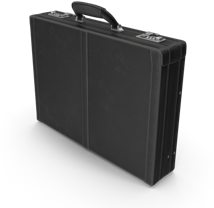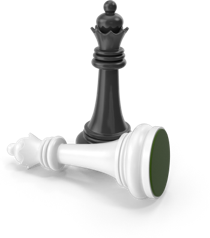Crypto portfolio diversification (with examples)

So, you want to know how you can build a cryptocurrency portfolio that will bring you long-term success with a minimal amount of risk? Maybe you’ve sat on the sidelines for long enough and have decided it’s time to step into the world of cryptocurrency for real.
But the question remains, which cryptocurrencies should you invest in? You’ve heard about ‘diversification’ but are still not really sure what a well-diversified crypto portfolio looks like.
Basically, diversification is a fancy way of saying: Don’t put all your eggs in one basket.
While we are not financial advisors, we ARE crypto enthusiasts – this article will explore a few different ways you can put together a well-diversified portfolio (with examples), greatly increasing your chances of long-term success.
Key Takeaways
- Diversification spreads out your risk, allowing you to enjoy both the stability of established coins like Bitcoin and Ethereum and the astronomic potential of mid-low-cap coins.
- There is no such thing as the perfect portfolio or trading strategy – everyone has different investment goals & risk tolerances – it’s about finding the one that suits you.
- For those who want exposure to crypto with as little risk as possible, you should focus on large-cap cryptos (particularly Bitcoin and Ethereum).
- Cryptocurrency is just one (very new) kind of asset class. True diversification involves spreading your investments beyond the world of crypto!
- Following the 80/20 rule will allow you to make sizable profits from any sudden surge in the small to mid-cap cryptos, whilst also having a large part of your investments in stabler coins.
- While diversification does reduce risk, it doesn’t eliminate it altogether.
The theory behind diversification
Firstly, why is diversification a good idea? Cryptocurrency is a volatile market and it is not uncommon for an asset to see huge gains and losses in a short amount of time.
If all your money is in 1 or 2 coins, it is possible that one day you will be up and the next day you will be all the way back down – when it comes to investing it’s never wise to put all your eggs in one basket.
If you’ve diversified well, outside of a huge crash, it’s unlikely that ALL your crypto investments will crash at the exact same time. Having your investments spread out over a number of coins is recommended.
We’ll get into some concrete examples below, but a well-diversified portfolio usually contains a blend of small, mid and large-cap coins which span a range of cryptocurrency types. The 80/20 rule is a good starting point if you’re new to crypto.

Low vs Mid vs Large-cap cryptos
Before we show you how the 80/20 rule can help you diversify, we should define what low/mid/large-cap cryptos are.
Cryptocurrencies can be classified into 3 main categories in terms of risk/reward, with low-cap being the riskiest and large-cap being the safest. The ‘cap’ refers to the market cap of the crypto which is a good indicator of how safe a crypto investment is. Generally, the bigger the market cap, the safer the crypto (but the lesser the chance of making those infamous 100X gains).
Market cap is calculated by multiplying the number of coins in circulation by the current market price of a single coin.
Large-caps
Large-cap cryptos refer to the top 10 cryptos by market cap. However, Bitcoin and Ethereum are in a league of their own in terms of stability and long-term potential. They are both very well established compared to the rest of the large-caps, and every crypto investor should consider having some stake in them.

Mid-caps
Mid-cap cryptocurrencies carry more risk than large cap cryptos but are hardly the high-risk-high-reward plays that low-caps are. Generally, cryptos with market caps between $1 billion and $10 billion are mid cap, or anything in the top 10-50 cryptos by market cap. If you research well and are able to determine whether or not a mid-cap has the potential to develop with the needs of the market, they can be very lucrative investments given the way the crypto market is expanding.
Low-cap/micro-caps
These cryptocurrencies have the highest risk but the highest potential reward. Any crypto with a market cap below $1 billion (or not in the top 50 by market cap) can be considered a low/micro-cap crypto. There are no two ways about it – these are highly speculative investments that carry the off-chance of bringing those 100-1000X gains that crypto is known for.
If you’re punting on a crypto that has nothing behind it besides a lot of hype, prepare for a wild ride. And to lose your investment… While some have success with low/micro-cap gems, most of these projects never make it off the ground. Outside of huge bull runs, they are a long-shot that may produce massive gains.

The 80/20 rule
Having a roughly 80/20 blend of large-cap (80%)/mid & low-cap coins(20%) is a good rule to follow if you are new to crypto investing. With a portfolio diversified like this you should be able to make sizable profits from any sudden surge in the small to mid-cap cryptos, whilst also having a large part of your investments in stabler coins. This will also help minimise any liquidity issues in your portfolio (less established coins can be hard to trade due to a lack of buyers/sellers).
According to the 80/20 rule, 80 percent of your portfolio should be in the largest, most established cryptocurrencies like Bitcoin, Ethereum (with a smaller percentage allocated to a few in the top 10 by market cap).
The other 20 percent of your portfolio can be spread out amongst other mid and low-cap cryptos, which are riskier but provide the potential for much higher returns. If you aren’t sold on any of the low cap cryptos, feel free to allocate their portion to larger cap cryptos – even the ‘safer’ cryptos carry enough risk for many investors.
Note: All portfolio examples are suggestions only, and the 80/20 rule can come in many variations and may in practice look like: 60/20/5/5/5/5, 30/20/10/10/10/5/5/2/2/2/2/1/1, or 60/10/10/10/10. Always do your own research before investing.
80/20 portfolio examples
Example 1:
Bitcoin 40%
Ethereum 30%
Cardano 5%
Chainlink 2.5%
Binance coin 2.5%
PancakeSwap 5%
Terra 5%
Terra Virtua 3%
Avalanche 2%
Sushi 2%
Filecoin 2%
Quickswap 1%
Example 2:
Bitcoin 30%
Ethereum 30%
Ripple 5%
Cardano 5%
Chainlink 5%
Binance Coin 5%
Theta 5%
Vechain 5%
PancakeSwap 5%
Sushi 2%
Matic 2%
Quickswap 1%
Example 3:
Bitcoin 60%
Ethereum 10%
Tether 10%
Cardano 3%
Uniswap 3%
Polkadot 2%
Solana 2%
Decentraland 2.5%
Theta 2.5%
Enjin Coin 2%
Ankr 2%
Synthetix 1%
The 40/30/30 Portfolio
If you feel like you’re late to the Bitcoin/Ethereum party, you might want to spread your crypto investment around a little bit more. While many recommend having most of your portfolio in Bitcoin and Ethereum, especially if you’re new to crypto, here is an example of a well-diversified 40/30/30 portfolio, with a higher risk-reward profile than the 80/20 option.
40% -Top 2 cryptos (Bitcoin & Ethereum)
Stability, solid gains
30% – Large caps $10B (Altcoins in the top 10 by market cap)
Some stability, faster gains
30% – Mid-caps $1-10B & Small-caps $1B or less
Med-high risk, possibility for huge gains
40/30/30 Portfolio Example:
Bitcoin 25%
Ethereum 15%
Ripple 10%
Cardano 5%
Litecoin 5%
Binance Coin 5%
Polkadot 5%
Theta 10%
Vechain 5%
Filecoin 5%
Terra Virtua 2%
Jupiter 2%
Syntropy 2%
Travala 2%
Singularity network 2%
Common crypto personas & archetypes
In crypto, most people fall into a category of investor. Here are a few of the most common ones and how they organise their portfolios. See which one suits you and get started today.
The All-rounder
The level-headed investor who wants a good mix of established coins and some riskier low-mid caps for a bit of fun. They have a decent understanding of the crypto market and aren’t looking to sell out any time soon.
With a portfolio consisting mainly of Bitcoin, Ethereum and a few other large-cap cryptos, the all-rounder has a balanced risk-reward profile. Following the 80/20 rule this is a well-diversified portfolio for both new and experienced traders.
Risk profile: Medium
The Conservative
This person already has investments in other asset classes (stocks, real-estate, gold, etc.), but is looking to add some crypto (namely Bitcoin & Ethereum) to their portfolio. They’re not completely sold on crypto, but they’re smart enough to know that crypto may continue its meteoric rise. And they don’t want to miss out. Usually sticking to Bitcoin with a hint of Ethereum and maybe some other safe cryptos and stablecoins, the conservative takes a reserved, low-risk approach to investing.
Risk profile: Low-Medium
The Newbie
Despite not knowing much about cryptocurrency, this person wants in. He or she asks their most-savvy friends and then buys a few popular coins not really understanding why. While we recommend always doing your own research (DYOR) and understanding what you’re investing in, sticking with the top cryptos and HODLing for the long-term is not the worst way to go if you don’t have much time to dedicate to crypto.
While it can be hard to know when to buy and when to sell if you don’t know what is happening with a project, a popular strategy is keeping the risk-profile relatively low and using the set-and-forget method in the hopes that one day their investment will be worth a lot.
If you’re not sure about whether this new technology is for you, check out our guide on if investing in cryptocurrency is for you.
Risk profile: Low-Medium
The Low-cap Gem-hunter
The adrenalin junkie who wants to be the next overnight-crypto-millionaire story. They have read all about the life changing crypto gains out there and are hoping to find the next 100-1000X gem that will solve all their financial problems. These people often get burnt. Especially if they are blindly throwing their hard-earned cash at coins that have no past track record.
Searching for the next undiscovered Bitcoin or Ethereum is not a good strategy, however, if this person is just looking to ride the pump and then sell before the dump, this approach can be extremely lucrative – if you’re lucky. There’s no harm in punting on a few low-caps you like, but we don’t recommend going all out with these highly speculative investments.
Risk profile: High-Ridiculously High
The FOMOer (fear of missing out)
This person feels like they are late to the party and are overly-keen to invest in anything that shows potential of pumping. Unfortunately, this describes way too many people in the industry. Plenty of newcomers arrive and end up rushing into coins they’ve been told are ‘going to the moon’ very very soon. And then they don’t.
Generally, jumping on any project you don’t have a solid understanding of is a bad idea. Most cryptocurrencies will not deliver on what they promise and though many will have their brief moment of fame, they will soon fall back to earth where they will stay for years to come. The FOMOer’s portfolio is usually a mix of a few coins they’ve heard about in the news, and a bunch of other random projects that have way better marketing than technology.
Risk profile: High-Very high
The HODLer
The HODLer can be a casual investor who wants to throw a bit of spare cash into crypto, or the whale who has bottomless pockets and is hedging their bets against the stock market. This person isn’t interested in taking advantage of every movement in the market and is betting on the long-term potential of cryptocurrency.
Whether this is 5, 10 or 20 years down the track, the HODLer simply buys promising coins at the lowest price possible and then holds them. Considering how the last decade of crypto has gone, this might not be a bad strategy. By betting on the most stable cryptos that show promise of longevity, this is a fairly low risk, low stress approach that suits many investors, especially those who don’t want to watch the markets.
Risk profile: Low-Medium
The Bitcoin Maximalist
This person is all about Bitcoin. They aren’t too swayed by the idea that there will be many successful cryptocurrencies and seem to be convinced that the OG cryptocurrency will be king forever. While there are many reasons to think Bitcoin is your safest bet in the crypto market, these investors treat Bitcoin as if it is the only crypto out there. Some investors trade a bunch of cryptocurrencies with the sole goal of amassing as much Bitcoin as possible.
Risk profile: Medium
The Ethereum Maximalist
This growing breed of investor believes that Ethereum is the future. After all, it is the home of DeFi (decentralised finance) and is by far where most of the action in crypto is currently taking place. Given how established Ethereum is, and how many cryptos are built on the Ethereum Blockchain, these people see crypto going far beyond just digital money, and have Ethereum-heavy portfolios.
Risk profile: Medium
The Day Trader
A day trader’s portfolio varies by the day. Or the hour. They don’t care what they hold and are merely trying to make the most of the fluctuations in the market. Basing most of their decisions on charts and technical analysis, they will invest in cryptos that have no long-term potential if they think they can make a quick buck riding the pump.
This is a high-risk-high-reward-high-stress strategy and one that we don’t recommend unless you really know what you’re doing. Consistently making money by day trading is difficult in any market, and most investors find that HODLing is way less stressful and is potentially a more effective strategy in the long run.
Risk profile: High
The Over-Diversifier
Possessing many character traits of the FOMOer, this type of investor has not yet learnt that there is no shortage of opportunities in the world of crypto. They are so scared of missing out on a chance at huge gains that they end up investing in WAY too many coins.
Usually thinking they are betting on a bunch of winning horses, they wake up one day to find they own 50-100 coins, most of which they don’t really understand (or can remember buying). If this describes you, don’t worry – you’re not alone. This happens to many newbies, and you can restructure your portfolio to be easier to manage if you’re okay with taking some losses.
Still, you should know that it’s never wise to invest in more coins than you can keep track of. Knowing a project inside and out and staying up to date on all the latest announcements is the best way to know when to buy/sell/hold an asset. This isn’t really possible when you own hundreds of coins.
Risk profile: High
Why is not diversifying risky?
If you are a casual or small-scale investor, you might be fine investing in two or three cryptocurrencies, with the majority of your holdings in Bitcoin & Ethereum. However, this comes with its risks.
The infamous price crash of 2018 saw several major cryptocurrencies (including Bitcoin) plummet. It showed investors that putting all your eggs in one (or too few) baskets can mean that when your portfolio crashes, it really crashes.
If you’re not sure about whether this new technology is for you, check out our guide on if investing in cryptocurrency is for you. For more info on which crypto investing strategy is for you, click here.
What is time diversification/Dollar-cost-averaging (DCA)
Time diversification and Dollar-cost averaging (DCA) are tried-and-tested strategies that can super-charge your investments. Perfect for beginners and those who don’t have the time to constantly watch the markets for the best entry point.
Basically, these strategies refer to investing a total sum of money in small increments over time, instead of all at once. The aim is to flatten out the market’s volatility – to take advantage of market downturns without risking too much capital at any one time.
DCA intends to offset the negative effects caused by short-term market volatility. Over the long-term, investing bit by bit is usually a better plan than constantly trying to guess the best time to enter the market, which is very hit and miss unless you really know what you are doing.
If you’re not a professional, DCA can save you the effort of trying to get the best prices for your favourite cryptos. It’s a very useful tool (which you can automate using our recurring buy feature) that allows you to invest consistently with as little risk as possible. Forget about bad timing and just enter in when you want to buy, and how often. Then sit back and relax while Digital Surge’s easy-to-use app builds your portfolio for you.
Here’s an example:
Rather than buying your portfolio all at once, you instead buy parts of it at intervals. Every week you might want to purchase 50 dollars of Bitcoin and 30 dollars of Ethereum, while playing around at buying some other alts you like when they are at solid prices.
While this will take longer to assemble your total portfolio, it is a strategy we recommend. You might decide to buy 10% of your portfolio every month or 5% every week if you are in a rush to get your portfolio assembled.
What is portfolio rebalancing?
Portfolio rebalancing or portfolio reallocation is a strategy that has served investors for decades. After you have determined what kind of allocations you will have in your ideal portfolio (40/30/20/5/5), for example), it is recommended to check in every now and then to make sure your portfolio sticks to that allocation.
The prices of your assets will inevitably fluctuate over time, throwing off your original allocation between low, mid and large-cap coins, and thus changing the risk-reward profile of your portfolio.
When it is time to rebalance the portfolio, profits are taken & coins are traded so that the value held in each asset is once again equal to the percentages that were originally specified in your allocation strategy.
Advantages of rebalancing your portfolio:
- With so many people ‘HODLing’ crypto for the long term, rebalancing every few days/weeks/months helps take advantage of rapid fluctuations in price.
- Even if the value of a coin goes up for a short time before returning to its original price, rebalancing allows you to retain those positive gains by distributing those profits amongst your other assets.
- Crypto is highly volatile. Rebalancing is a tried-and-tested way to combat this & make sure your portfolio reflects the risk-reward profile you set out with.
Example:
Let’s say you have a portfolio of 5 cryptocurrencies: BTC, ETH, LINK, JUP & TFT. You determine that you would like 60% of your portfolio to be in BTC & ETH (30% each), 20% in LINK and 10% in JUP & 10% in TFT. It’s a fairly low-risk portfolio, with a hint of two high-risk-high-reward low cap gems (JUP & TFT).
Say over the next few weeks, your low cap gem in JUP sees a big rise and triples, while BTC goes down in price, and ETH, LTC & TFT stay about the same. If you now looked at your portfolio, the low cap section (JUP) would be worth a lot more than just 10% percent of your total portfolio, and the Bitcoin section would be worth less than 30% (when you measure by their fiat value).
Rebalancing would be the process of recalculating how much JUP (in fiat currency) you would need to sell and convert to Bitcoin & other coins for your portfolio to reflect your original allocation. This ensures that your portfolio does not contain an over-allocation of highly volatile low caps as time progresses.
What are some other diversification strategies?
While we don’t have time to delve into the intricacies of all the different ways you can diversify your crypto portfolio (in THIS article…), here’s an overview of a few other strategies to consider:
- Industry diversification
This approach requires a decent understanding of the crypto market, but the rewards can be substantial if done well. The idea is to own cryptocurrencies that fall into different industries or crypto sectors. That way, if one industry takes a hit, the rest of your portfolio can soak in the impact without having a major effect on your overall returns.
Additionally, if crypto does continue to grow the way that it has, we will likely see a few projects capture a big portion of the market share in each sector. If you manage to jump on one of these coins now, the long-term returns could be astronomic.
Some sectors to look at include DeFi, borrowing/lending, supply chain management, AI, NFTs, Oracles, video streaming, gaming and cloud storage, to name a few.
- Diversify by use-case/type of crypto
There are many types of cryptocurrencies with different use-cases and functions. Investing across a broad range of them can be an effective strategy. Whether it’s privacy coins, utility tokens, stablecoins, security tokens or Blockchain protocols, having a range of coins that serve different purposes in the crypto ecosystem is worth thinking about when diversifying, though it is not vital if you’re just starting out.
Some examples of cryptocurrencies and their different use cases:
- Bitcoin – Store of value & payment rail
- Bitcoin Cash, Stellar, Dash – Payment
- Tether, Dai, and USDT – Stablecoins
- Monero, Zcash, Verge – Privacy coins
- Decentraland, Enjin – Gaming
- Ethereum, Tron, Cardano, and NEO – World computer/Blockchains
Diversification beyond cryptocurrency
While we believe crypto is the finance of the future, true diversification involves having your total portfolio split between a variety of asset classes (not just in crypto). Other asset classes like real-estate, stocks, bonds and gold can give your total portfolio the diversification it needs to weather whatever the world throws at it.
While some people exclusively trade cryptocurrency (there is no other market that has both an extremely low barrier to entry and so much potential for life-changing gains), it must be said that you should not be relying on cryptocurrency for your regular income.
The volatility of the crypto market is what attracts people, but it can also prove to be highly risky if you are over-invested in crypto. Bear markets (periods of depressed asset prices) do exist, and many experienced crypto traders also have investments in other asset classes.
Conclusion
And that’s a wrap. If you’re new to crypto and need some real guidance from trained professionals, don’t hesitate to get in touch with Digital Surge for a free phone consultation. We’d be happy to help you put together a strategy that suits you and your investing goals.
If you’re ready to get started and are looking for the easiest way to buy cryptocurrency in Australia, check out Digital Surge – an exchange that makes buying, selling and storing over 250+ cryptos simpler and easier-to-understand than ever before.
With an incredibly user-friendly interface, extremely low fees & a customer-support team you can rely on, getting involved in crypto has never been easier. Sign up today and enjoy safe, stress-free trading.
At Digital Surge, we believe crypto is the finance of the future. Which is why we’ve created Crypto Simple, a Crypto Education Hub that demystifies cryptocurrency, giving everyday people like yourself the knowledge they need to make the most of this exciting new resource.
See you around!
Did this answer your question?
Digital Surge is the easiest way for Australians to buy, sell & store over 250+ cryptocurrencies. With extremely low fees, a uniquely user-friendly interface and a customer-support team you can rely on, getting involved in crypto has never been easier. Sign up today and enjoy safe, stress-free trading.
Crypto-curious? The time you spend here will be the best investment you ever make.
Enjoy effortless trading today
- ACN 620 473 109
- © 2021 Copyright Digital Surge




